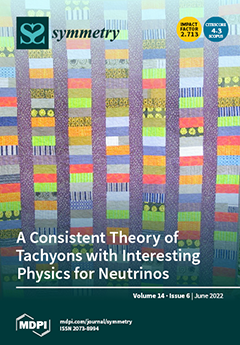Symmetry, Volume 14, Issue 6 (June 2022) – 206 articles
The picture is a quilt, made by my daughter some years ago, using scraps of materials from an old collection of fine dresses that my wife no longer wore.
“A Consistent Theory of Tachyons” is a work that re-examines the old, cherished theories of relativity and quantum mechanics to find a new story that seems to work in explaining some modern puzzles in physics: neutrinos, dark energy, and dark matter. View this paper
- Issues are regarded as officially published after their release is announced to the table of contents alert mailing list.
- You may sign up for e-mail alerts to receive table of contents of newly released issues.
- PDF is the official format for papers published in both, html and pdf forms. To view the papers in pdf format, click on the "PDF Full-text" link, and use the free Adobe Reader to open them.





